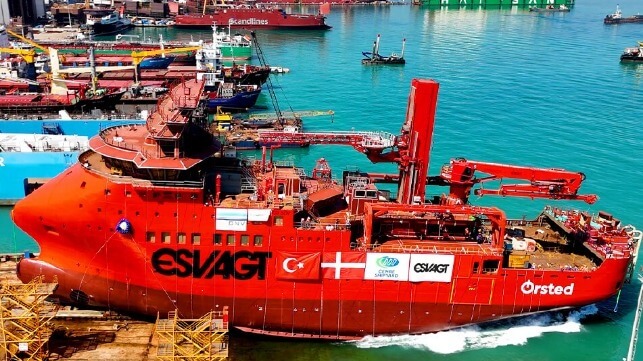Newbuild Orders Are “Clearly Shifting” to Methanol Says DNV

While alternative fuel systems are continuing to gain traction overall in the orders for newbuilds, DNV believes that the trend in 2024 shows the market is moving to methanol. Methanol leads in the percentage of orders placed in the past 12 months while the first containerships began sailing and now the first e-methanol-fueled service operation vessel was launched.
“Methanol continues to lead the charge,” says DNV Senior Consultant Kristian Hammer. Overviewing the data from the DNV Alternative Fuels Insights database for May and 2024, Hammer observed, “The market is clearly shifting towards methanol.”
For May, DNV calculates that there were 33 vessels ordered that will use alternative fuels, and of that 23 will be built to use methanol. So far in 2024, there have been 70 methanol-fueled vessels ordered compared to 46 LNG-fueled vessels. Containerships were the largest portion in May with 10 ships ordered but continuing the expansion of methanol into other segments, five bulk carriers and four car carriers were also ordered for methanol.
This diversification of the use of methanol is mirrored in the ongoing new constructions. Yesterday, June 3, Turkey’s Cemre Shipyard reported the launch of NB1094 ESVAGT, a new SOV that will serve Hornsea 2, the world's largest offshore wind farm, located in the North Sea off the Yorkshire coast of the UK. The vessel is the first being built with dual-fuel technology to use e-methanol and is equipped with a battery power system.
Methanol also continues to be strongly favored for new containerships. Maersk is continuing to take delivery of its new ocean-going methanol dual-fuel ships while X-Press Feeders put its first methanol-fueled vessel into service. China’s COSCO reports that it has also decided to expand its methanol orders converting four 16,000 TEU vessels already on order for conventional fuel to instead be outfitted as dual fuel methanol. The company had previously ordered 12 large 24,000 TEU methanol-fueled containerships to be split between its fleet and sister company OOCL.
Overall, containerships make up the largest portion so far of the methanol orders. DNV calculates there are now a total of 269 methanol-fueled vessels on order for delivery in the next five years, with 173 being containerships. There are only 35 methanol-fueled vessels in service currently according to DNV’s data.
LNG continues to lead with 8.7 percent of the overall orders versus 4.6 percent for methanol, but for orders in the past 12 months that has swung to put methanol in the lead. In May, there were eight new orders for LNG-fueled vessels.

that matters most
Get the latest maritime news delivered to your inbox daily.
In total about 16 percent of the orders are for alternative fuels with DNV highlighting the continuing momentum for the segment. They reported alternative fuel orders were “sky-high” in the first two months of the year. Also beginning to emerge are orders for ammonia-fueled vessels. DNV recognizes that ammonia remains at an early stage, but notes there are now 11 orders up from just two in 2023.
They believe there is an “increasing appetite from the market for methanol-fueled vessels.” Alternatives are expected to continue to increase their overall share of the market as owners begin to address the challenges that lay ahead to meet decarbonization targets.
